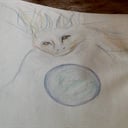Who was the first leader of the Soviet Union?
Vladimir Lenin (22 April 1870 – 21 January 1924) was founder of the Russian Communist Party, leader of the Bolshevik Revolution and architect and first head of the Soviet state.
Lenin came to power in the Bolshevik Revolution in November 1917 (October in the old-style calendar), which overthrew the Provisional Government. He had been instrumental in winning the Bolsheviks over to a policy of armed insurrection in order to form a Soviet government.
Lenin’s power rested less on this formal position than on his prestige among the leaders and supporters of the Bolshevik party, which became the All-Russia Communist Party (Bolsheviks) in 1918. He was a member of the Political Bureau of the Central Committee of the Party, which consisted of five full members and three ‘candidates’.
Under Lenin’s leadership, the new Soviet state faced critical challenges which threatened its survival. He was a guiding force, navigating the regime through civil war, economic dislocation and famine, though at great cost.
Lenin died on 21 January 1924, after suffering a series of strokes. The Leaders of the Communist Party had been preparing for his death, concerned that the new Soviet state would lose legitimacy without its central figurehead. They built a ‘Lenin cult’ of symbols and myths to secure the legitimacy of the regime after his death. As part of this project of almost religious veneration, Lenin’s body was mummified and placed on display after a week of ceremonial and ritual.
More Info:
www.biography.com



